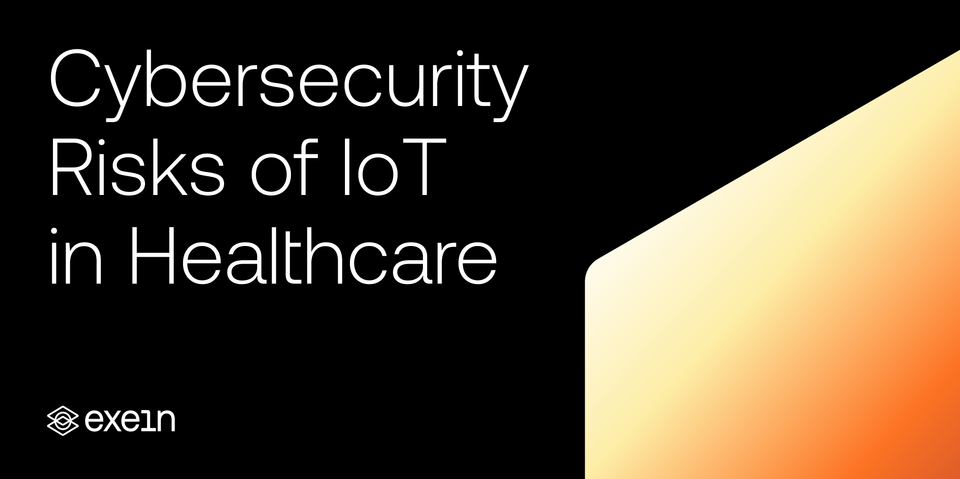What are the Cybersecurity Risks of IoT Devices in Healthcare?

As the healthcare industry rapidly embraces digital transformation, the integration of IoT devices has revolutionized patient care, diagnostics, and operational workflows. Yet, with innovation comes vulnerability. The convergence of healthcare and IoT opens the door to a range of cybersecurity threats in healthcare, particularly around medical device and patient data security.
In this article, we explore the most pressing cybersecurity issues and solutions for big data systems in healthcare, highlighting real-world cases and outlining healthcare cybersecurity best practices for mitigating risks in this high-stakes environment.
What are the potential security risk associated with IoT devices in healthcare?
1. The Silent Intruder: Unauthorized Access
From infusion pumps to smart monitors, IoT devices often lack robust authentication mechanisms. This leaves them exposed to unauthorized access by malicious actors. A recent FDA alert revealed vulnerabilities in patient monitors that could allow remote manipulation, endangering patient safety—a stark reminder of the need for IoT security solutions in healthcare environments.
2. The Data Heist: Breach of Patient Confidentiality
IoT devices collect enormous volumes of sensitive data. Without advanced healthcare cybersecurity solutions, this data becomes a prime target. Breaches of patient data security can lead to identity theft, fraud, and loss of trust in medical institutions.
3. The Hostage Situation: Ransomware Attacks
Ransomware has become one of the most destructive cybersecurity threats in healthcare. Exploiting weak points in IoT security, attackers can encrypt critical data and demand payment, disrupting medical services. The FDA's concern over vulnerable devices only highlights how urgent it is for healthcare cybersecurity companies to implement proactive defenses.
4. The Weak Link: Outdated Systems
Many legacy medical devices run outdated firmware and lack proper patching procedures. These outdated systems are breeding grounds for exploits and malware—requiring immediate attention through cybersecurity solutions for healthcare that include automated update management.
5. The Network Nightmare: Compromised Infrastructure
A single compromised IoT device can jeopardize an entire hospital network. Cyber attackers often use these devices as entry points, leading to widespread infrastructure breaches. This underscores the necessity for medical device IoT security and network segmentation.
What are the best practices for medical device security?
Tackling cybersecurity issues in healthcare requires a proactive, multi-layered strategy. Here are key recommendations supported by top healthcare cybersecurity companies and global standards.
1. Adopt International Standards and Regulatory Compliance
Implement frameworks like ISO/IEC 27400 for IoT security, alongside GDPR, HIPAA, and local healthcare data protection laws. These standards provide a strong foundation for healthcare cybersecurity services and ensure regulatory alignment.
2. Keep IoT Firmware and Software Up to Date
Outdated software is one of the most common entry points for attackers. Routine patching, secure configurations, and firmware updates are essential for reducing exposure.
3. Educate Healthcare Staff on Cybersecurity Hygiene
Human error remains a leading cause of data breaches. Regular training on phishing, password best practices, and device handling strengthens frontline defense.
4. Deploy Advanced Cybersecurity Solutions
Implementing advanced security measures is critical to protecting sensitive data in the healthcare sector. Key components include:
- Multi-factor authentication (MFA)
- End-to-end encryption (data in transit and at rest)
- Network segmentation
- Zero Trust architecture
These are standard tools offered by healthcare cybersecurity companies to minimize lateral movement and block unauthorized access.
5. Use Edge Computing for Enhanced IoT Security
By processing data closer to the source, edge computing reduces latency and potential exposure, enhancing cybersecurity solutions for healthcare IoT systems.
6. Invest in Ongoing Cybersecurity Awareness
Cyber threats evolve daily. Ongoing training and incident response simulations help healthcare professionals stay vigilant against ransomware, phishing, and emerging IoT cybersecurity risks.
Securing the Future of Healthcare IoT
The benefits of IoT in healthcare are transformative, but so are the risks. By adopting advanced IoT cybersecurity measures, partnering with top healthcare cybersecurity companies, and building a culture of awareness, organizations can secure their networks, protect their patients, and ensure operational resilience.
At Exein, we’re redefining IoT security from the firmware up—providing embedded, scalable solutions that safeguard every connected medical device.




